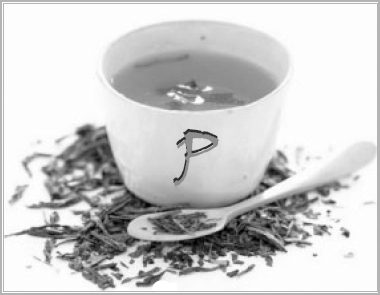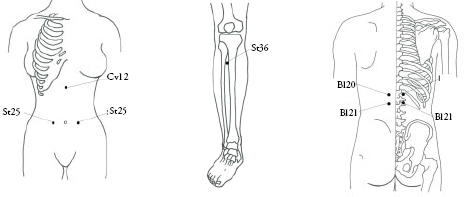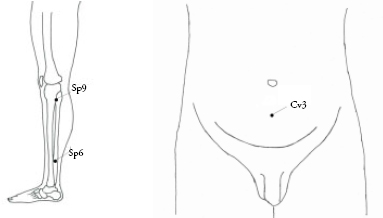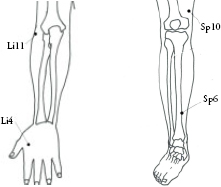
Peptic Ulcers
WHAT IS IT AND WHAT CAUSES IT?
Peptic ulcers are lesions in the inner lining of the stomach or duodenum. Some people can be symptom free. You may have pain in the upper abdomen or under the breastbone, a poor appetite, nausea, or bloating. If you have internal bleeding, you may have bloody or black, tar-like stool. It comes and goes. If the pain happens after a meal it is a gastric ulcer. If the pain appears two or four hours after a meal, it is a duodenal ulcer. Research shows the bacteria, called helicobacter pylori, is the main cause of peptic ulcers. Also genetics, some medications, a diet with too much fatty or spicy foods, smoking, or emotional stress can be other possible causes.
WHEN SHOULD YOU SEE A DOCTOR?
If you have any symptoms of peptic ulcers, see a doctor. If you are vomiting blood or have bloody or tar-like stool you need immediate medical attention.
WHAT SHOULD YOU DO IN DAILY LIFE?
- Take care of your ulcer in the early stages. As long as you have these symptoms and your breath has an unusually foul odor, see your doctor. It will be much easier to treat.
- Always eat on schedule. Eat small meals and do so more frequently. Eat easily digested food only.
- Drink more water. Eat yogurt instead of drinking milk. Eat ripe bananas and honey frequently. All this can protect the affected area in your stomach. Chewing gum produces more saliva, which could neutralize acid.
- Controlling your emotions is very important in your recovery process. Any upset, such as anger, fear, or depression, can disturb your internal secretion and accelerate the ulcer-forming process.
- Take it easy. Overexertion is another trigger for ulcers. Set up a reasonable work and rest schedule and follow it strictly. Sleep on time. Get out of bed on time.
- Watch medication such as painkillers. If you are taking aspirin or ibuprofen, ask your doctor to change your treatment.
WHAT SHOULDN'T YOU DO?
- Quitting smoking and drinking alcohol are very important steps for an ulcer patient.
- Don't eat too much. A large quantity of food will produce too much workload on the stomach and cause an ulcer.
- Absolutely avoid raw, cold foods and fried or greasy foods. Do not eat food that is hard to digest.
- Don't eat foods that are too sweet, too sour, too salty, or too hot. Drink less coffee and less strong tea. Don't drink soda.
Folk Remedies
- Use your four fingers to pat the back of opposite hand, the reflex zone of your stomach, for three minutes. Change hands and do the same. Continue for a prolonged period.
- Take potato charcoal:
Ingredients: 4 lb. potatoes.
Procedure: Crush potatoes in a blender until it looks like thick soup. Pour it into a cotton-fabric sack. Place the sack into 3 cups of clear water. Continuously squeeze or knead until a white paste-like powder appears. Pour this liquid into a pot and boil until almost dry. Lower the heat and bake it until brown. When it looks like a black film, grind the film to fine powder and store in a bottle. Take 1/4 tsp. before meals, three times a day for three weeks.
Food Therapy
- Take honey: Steam 100 ml honey in a bowl. Divide into three portions. Take one portion on an empty stomach three times a day for three weeks.
- Drink egg soup:
Ingredients: 1 egg.
Procedure: Beat the egg and boil in water. Eat 30 minutes before breakfast and bedtime every day.
- Eat sesame seeds with brown sugar and honey:
Ingredients: Sesame seeds, brown sugar, honey.
Procedure: Stir-fry sesame seeds until well done. In the same proportion mix the sesame, brown sugar, and honey together. Store in a bottle. Take 1 Tbs. before bedtime.
- Take ginger rice soup:
Ingredients: 1/8 oz. ginger, 3 oz. rice.
Procedure: Smash ginger to small pieces. Simmer ginger with 4 cups of water until only 3 cups are left. Strain out the residue. Add cooked rice to make rice soup. Drink once a day.
- Eat sticky rice with red dates:
Ingredients: 3 oz. sticky rice, 7 red dates, 25 ml honey.
Procedure: Add ingredients to 3 cups of water. Cook for 20 minutes to make a very soft rice soup. Drink twice a day for a week.
Chinese Massage
Choose the following points and massage once a day. If you have bloody stool, don't do massage.
- Gently push from the point halfway between the belly button (navel) and the low end of the breastbone (Cv12) to the lower end of your breastbone for two minutes. Gently press and knead Cv12 point for one minute.
- Gently rub the upper abdomen clockwise 100 times and counterclockwise 100 times. Don't press too hard.
- Gently press and knead the point two thumb-widths on either side of the belly button for one minute (St25).

- Gently press the depression four finger-widths below the kneecap edge and one thumb's-width outside of the shinbone (St36).
- Gently press and knead the points on your back two finger widths apart from the spine on both sides, from four finger-widths above the waist all the way down to the waistline for one minute (Bl20, Bl21).
Chinese Herbs
- If you have a dull stomach pain that feels better with warmth, pressure, or after a meal, take the patent herb Fu Zi Li Zhong Wan. Follow the instructions.
- If you have stomach pain radiating to your ribs related to emotional upset, a sensation of bloating, belching, a sensation of bitterness, or acid reflux, take the patent herb Chai Hu Shu Gan Wan. Follow the instructions.
- If you have stomach pain with a burning sensation that radiates to the ribs and is not alleviated by eating a meal, and you are feeling irritable and have bitter sensations in your mouth, take the patent herb Zuo Jin Wan. Follow the instructions.
- If you have stitching stomach pain at a fixed area that is worse with pressure, or black stool, take lotus and egg with herbs:
Ingredients: 1/8 oz. pseudoginseng powder, 3 oz. lotus root, 1 egg.
Procedure: Use a juicer to make lotus juice first. Beat an egg. Place the egg, lotus juice, and herbs in a bowl. Steam them for 20 minutes. Eat twice a day.
Prostate Problems
WHAT IS IT AND WHAT CAUSES IT?
Enlargement of the prostate and prostatitis are conditions common in men older than age 40. Enlargement of the prostate is called benign prostatic hyperplasia (BPH). Symptoms are frequent urination at night, delayed urination, a weak urine stream, and dribbling. The cause of BPH still remains unclear. It may be related to hormones. Prostatitis is an inflammation of the prostate gland caused by urine trapped in the bladder. Symptoms are burning, painful, and frequent urination, pain in the perineum area and lower back, impotence, and fever.
WHEN SHOULD YOU SEE A DOCTOR?
If you are experiencing any urination problems, see your doctor.
WHAT SHOULD YOU DO IN DAILY LIFE?
- Stress, depression, or anxiety can contribute to a prostate problem. You should keep an optimistic outlook. Keep yourself upbeat by chatting, walking, dancing, or listening to music. Understanding the cure of a prostate problem is a long-term process. Increasing your confidence, and persistently getting treatments are the key factors for recovering.
- Eat more vegetables and fruits. Eat zinc-rich food such as sesame seeds, watermelon, pumpkin seeds, oyster, fish, apples, and apricots. Eat two or three tomatoes a day.
- Drink plenty of water to encourage urination before noon.
- Sleep with a hot water bottle. The temperature should be as hot as is comfortable. Place the bottle on the lower abdomen just below the bellybutton. It will help to decrease frequent urination at night.
- Take a warm bath for 20 minutes before bedtime. Meanwhile, use a warm towel to massage the area between the anus and testicles.
- Exercise regularly. Jogging and practicing Tai Chi are good for recovering from prostate illnesses. This kind of exercise can act as an internal massage to the prostate.
WHAT SHOULDN'T YOU DO?
- Avoid spicy and greasy foods. Drink less soda, coffee, and tea. Eat less acidic foods such as citrus fruits and orange juice. Avoid hot-natured foods such as ginger, garlic, or cinnamon.
- Don't ride a bicycle or sit for a prolonged period of time. Never sit on damp or cold ground.
- Quit smoking. Drink less alcohol.
- Avoid constipation.
Folk Remedies
- Sound therapy for difficult urination: Place a container under a water tap. Open the tap slightly and let water drip into the container. Record the sound of the drops and play the tape when you want to urinate.
- Vision therapy for difficult urination: Hang a picture or painting with a waterfall flowing down from a mountain on the wall behind the toilet.
- For frequent urination at night, use your palms to gently tap both sides of the back at the level of the waist 150 to 200 times rhythmically.
- To treat enlargement of prostate, apply salt to your lower abdomen. Stir-fry salt and place in a cotton bag. Apply to the midline of your lower abdomen for 30 minutes. Take care not to burn yourself. Reheat the salt if it becomes cool.
- For prostatitis, drink royal bee jelly. It is available in Chinese grocery stores. Dilute the jelly with water to make 1 to 100 solution (for example, mix one Tbs. of royal bee jelly with 6 cups of water). Drink 30 ml at a time on an empty stomach, three times a day for a prolonged period.
Food Therapy
- For prostatitis, drink sugarcane juice. Peel 1 lb. of sugarcane. Use a juicer to make juice. Divide into two portions and drink twice a day.
- Eat six cloves of slightly fried, warm walnuts before bedtime every day.
- To treat enlargement of prostate, take raw pumpkins seeds (1 oz. a day). Or take pumpkin powder (2 or 3 tsp. a day).
- For prostatitis drink Chinese cabbage and lotus tea:
Ingredients: 1 lb. Chinese cabbage root, 1 lb. lotus root.
Procedure: Slice the cabbage root into small pieces. Remove the node of lotus and slice into small pieces. Use a juicer to make juice separately. Mix these juices and drink before bedtime.
Chinese Massage

- If you have difficulty urinating, use your thumb to gently press the point right at the midpoint between the pubic bone and belly button (navel). Start with mild pressure and gradually increase the force until all urine passes.
- As routine exercise, choose from the following and massage once a day for a prolonged period:
- Lie down on a bed. Rub your palms together until they feel warm. Place your left palm on your belly button. Overlap your right palm. Gently rub the lower abdomen clockwise for two minutes, then rub counterclockwise for another two minutes. Place both palms on either side of the belly button and push down to the top of the legs for two minutes.
- Use your fingers to rub and knead your lower back down to the sacral area for two minutes. Use your palm to gently pat that area for one minute.
- Sit on a chair or lie down on a bed. Use your right middle finger to gently knead the perineum, the area between the anus and scrotum, for two minutes.
- Use the middle finger to gently press the point on the midline of the lower abdomen about one hand's-width below the belly button (Cv3). Gradually press down a little deeper, and press toward the perineum until you have a sensation of distention. Continue the pressure for 30 seconds then quickly release. Repeat three times.
- Gently press and knead the point right in the depression inside of the calf under the knee, behind the leg bone (Sp9), and the point four finger-widths up from the inside anklebone, right behind the leg bone (Sp6).
Qi Gong
- Stand with your feet shoulder width apart in a quiet room. Relax, and breathe naturally.
- While inhaling, squeeze the sphincter muscles around the anus, perineum, and tailbone. (Similar to holding a bowel movement.)
- While exhaling, slowly loosen the sphincter muscles around the anus, perineum, and tailbone. (Similar to the feeling when you are urinating.)
- Repeat for two minutes, twice a day for three weeks.
Chinese Herbs
- To treat prostatitis, insert the patent herb wild chrysanthemum suppository into your anus, twice a day for two weeks. Consult your doctor before using this product.
- For enlargement of prostate, take American ginseng and pseudoginseng:
Ingredients: 1/2 oz. pseudoginseng, 1/2 oz. American ginseng.
Procedure: Grind each herb into fine powder. Mix well. Take 1/8 oz. at a time with warm water, once a day. One course is 15 days. Repeat for two or three courses.
Psoriasis
WHAT IS IT AND WHAT CAUSES IT?
Psoriasis is a skin disease with red, itchy, raised patches covered by white scales that can fall in flakes. The cause of psoriasis still remains unclear. It may be related to stress, alcohol, and weather, or it can be genetic.
WHEN SHOULD YOU SEE A DOCTOR?
If you suspect your skin problem is psoriasis, see a doctor. If the psoriatic patches spread wildly, or if you have fever or joint pain, visit your doctor immediately.
WHAT SHOULD YOU DO IN DAILY LIFE?
- Relax, as excessive stress is one of the triggers. Maintain a positive attitude about your life and current situation. Don't take things too hard. Listening to soft music 15 minutes in the sunshine is a good way to reduce stress.
- Before applying any medications, use warm water and mild soap to wash the infected area carefully. Scrape off the flakes or scales.
- Sunbathing in bright and warm weather is very helpful. Begin with 10 minutes and gradually extend to one hour. Wear sunglasses to protect your eyes. Take a mineral bath if possible.
- Take enough vitamins. Eat more omega-3 rich food such as salmon.
- Exercise such as walking and Tai Chi should be done regularly.
WHAT SHOULDN'T YOU DO?
- Don't scratch. Instead, pat the affected spot to suppress itching. Applying a towel soaked in cold milk may provide relief from itching.
- Avoid spicy, greasy foods. Don't eat lamb, fish, shrimp, chives, onion, garlic, cinnamon, hot pepper, mustard, or fennel fruit, which will stimulate psoriasis.
- No alcohol at all.
- Don't stop using current medication without consulting your doctor first.
- If your psoriasis is in a developing stage, avoid any damage or stimulation to your normal skin such as injection, or any injury, which will cause new flare-ups.
Folk Remedies
- Wash infected spot as much as possible. Take a warm bath frequently with 1/2 cup of ground oatmeal. Use only very gentle, mild soap with additional moisturizers. Apply a thick layer of heavy cream to keep your skin moist.
- Use banana peels (inner side) to rub the infected area for a prolonged period. Applying aloe vera gel will help too. If you have an allergic reaction, discontinue use.
- Use a low-power vacuum cleaner to alleviate your itching. Remove the head or brush of the vacuum cleaner. Use the opening of the pipe to gently suck at your bellybutton (navel). Try to slightly lift the pipe, but don't lose contact with the skin. Continue for 10 seconds with suction. Repeat several times.
- Wash with willow branch water:
Ingredients: Fresh willow branches.
Procedure: Cut the willow branch into 3-inch stems. Put them in a pot with adequate water. Bring to a boil. Lower the heat to simmer until water becomes black. Wash the infected spot three times a day. The use of elm tree is also good. If you have an allergic reaction, stop.
- Apply water chestnuts and vinegar:
Ingredients: 15 water chestnuts, 90 ml rice vinegar.
Procedure: Slice water chestnuts and soak in vinegar. Simmer for 10 minutes. After the water chestnuts absorb the vinegar, crush the chestnuts and store in a sealed jar. Apply to the infected area, and cover with a piece of gauze. Change it daily. If you have an allergic reaction, discontinue use.
Food Therapy
- Eat Chinese dried mushrooms for a prolonged period. Soak in water for two hours. Stir-fry with cooking oil and soybean sauce. Eat with other foods.
- Eat black plums.
Ingredients: 1 lb. black plum, sugar.
Procedure: Remove the center. Add 2 cups of water and bring to a boil. Reduce heat and simmer until it becomes very thick. Store in a sealed jar. Take 1 Tbs. at a time with 1 tsp. of sugar, three times a day.
Chinese Massage
Gently press and knead the following points for one or two minutes:

- When your thumb is against the index finger, the webbing where it bulges up the highest (Li4).
- The point at the end of the crease on the top of the elbow joint, when the arm is folded across the chest for one minute (Li11).
- The point four finger-widths up from the inside anklebone, right behind the leg bone (Sp6).
- The point on the top of inside edge of the knee. Flex your knee and place your hand on the kneecap. The point is where your thumb touches (Sp10).
Chinese Herbs
- Take the patent herb Wu Shao She Pia. Follow the instructions.



